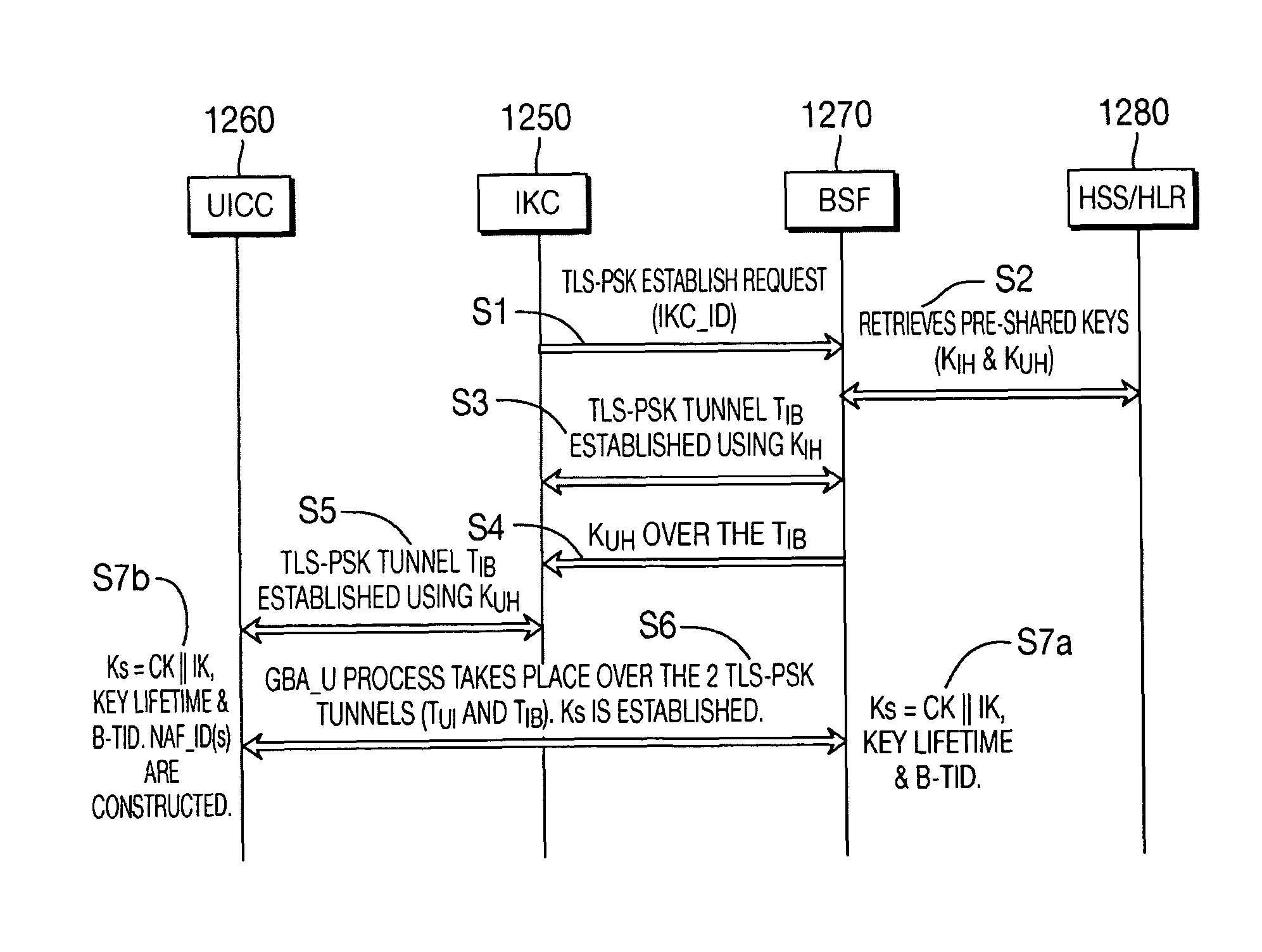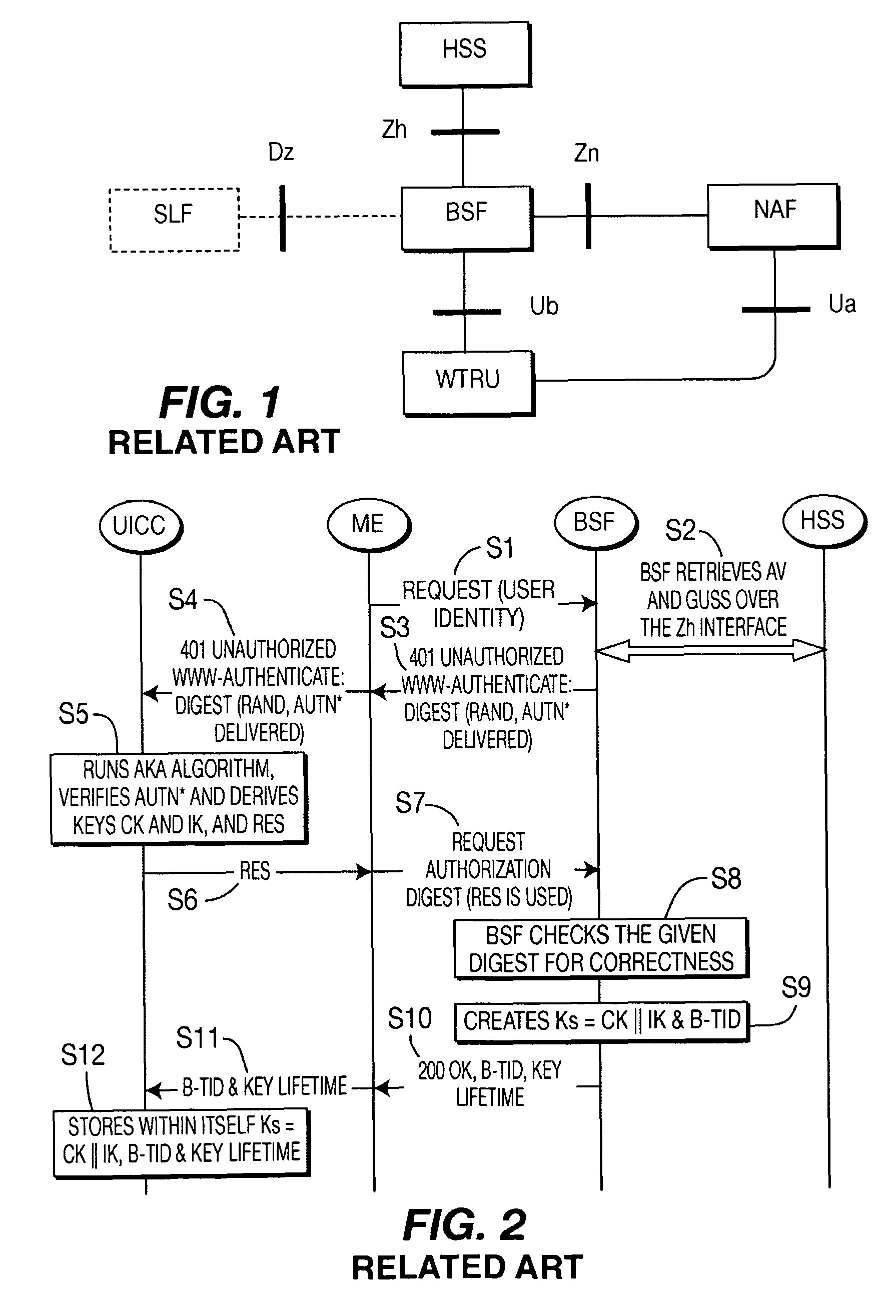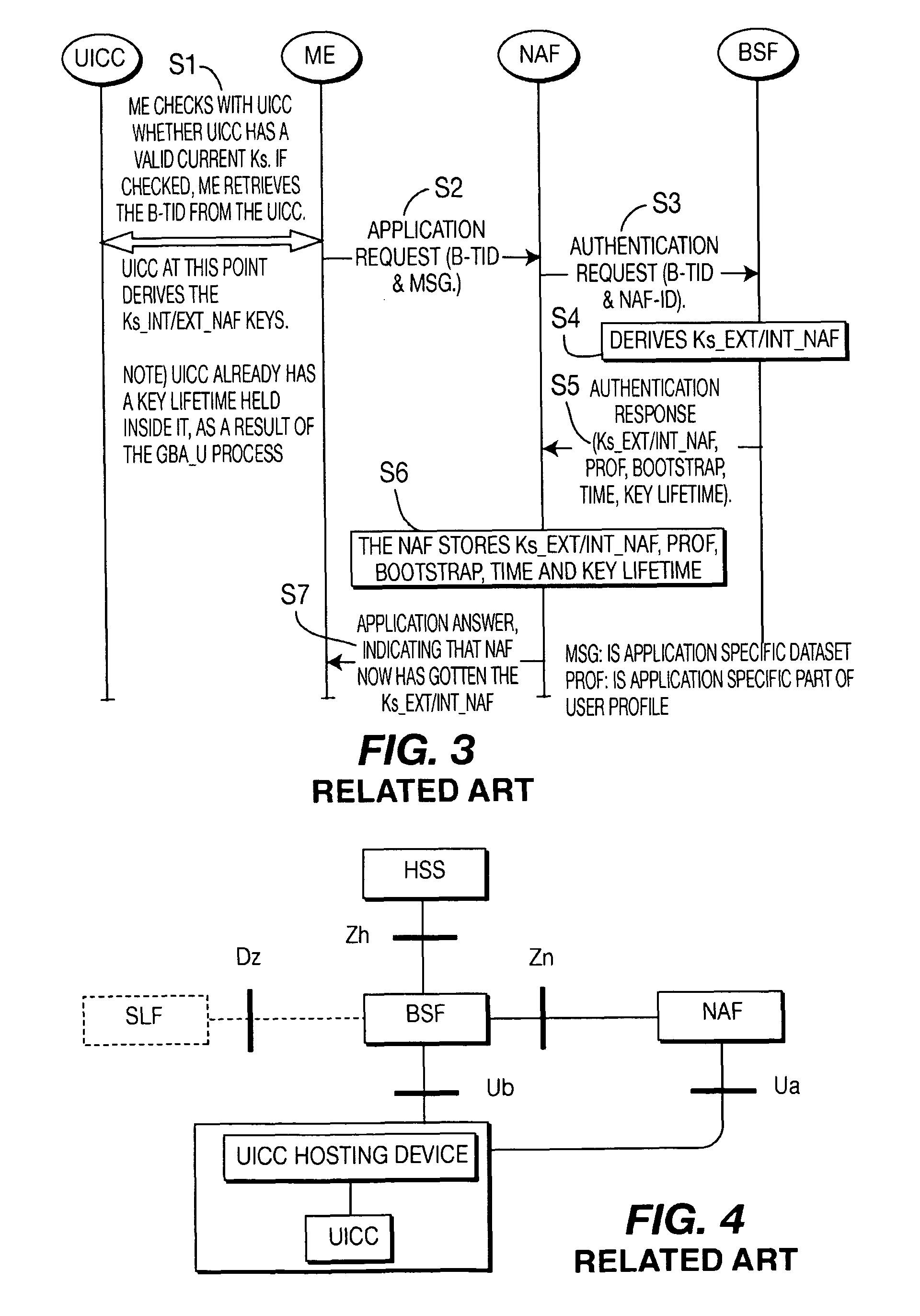Techniques for secure channelization between UICC and a terminal
a technology of secure channelization and terminal, applied in the field of wireless communication, can solve the problems of many subsequent procedures, local key (ks_local), and the risk of exposing the k eventually due to cryptanalysis
- Summary
- Abstract
- Description
- Claims
- Application Information
AI Technical Summary
Benefits of technology
Problems solved by technology
Method used
Image
Examples
Embodiment Construction
[0061]When referred to hereafter, the terminology “wireless transmit / receive unit (WTRU)” includes but is not limited to a user equipment (UE), a mobile station, a fixed or mobile subscriber unit, a pager, a cellular telephone, a personal digital assistant (PDA), a computer, or any other type of user device capable of operating in a wireless environment. When referred to hereafter, the terminology “base station” includes but is not limited to a Node-B, a site controller, an access point (AP), or any other type of interfacing device capable of operating in a wireless environment. In the detailed description set forth below, the term ME is synonymous with Terminal and these terms are interchangeable. UE is used to identify collectively incorporate a UICC and a Terminal (or ME). Trusted Mobile Phone is synonymous with Terminal but which is trusted in the TGC sense. Phone is synonymous with Terminal. Remote device identifies a UE wherein its UICC and a reader for the UICC are not reside...
PUM
 Login to View More
Login to View More Abstract
Description
Claims
Application Information
 Login to View More
Login to View More - R&D
- Intellectual Property
- Life Sciences
- Materials
- Tech Scout
- Unparalleled Data Quality
- Higher Quality Content
- 60% Fewer Hallucinations
Browse by: Latest US Patents, China's latest patents, Technical Efficacy Thesaurus, Application Domain, Technology Topic, Popular Technical Reports.
© 2025 PatSnap. All rights reserved.Legal|Privacy policy|Modern Slavery Act Transparency Statement|Sitemap|About US| Contact US: help@patsnap.com



